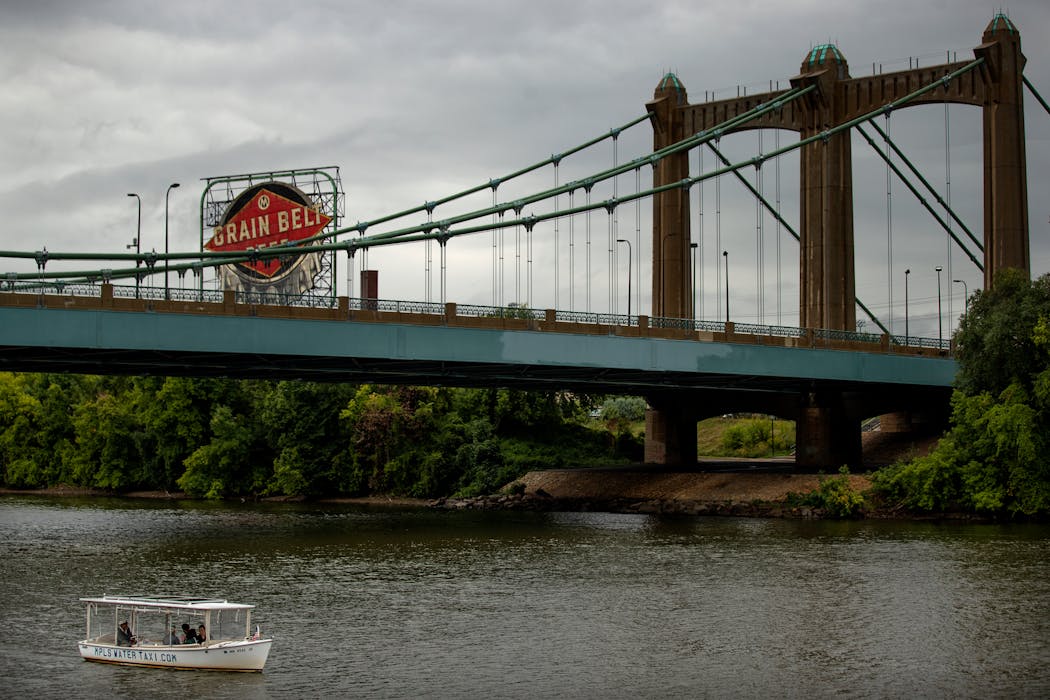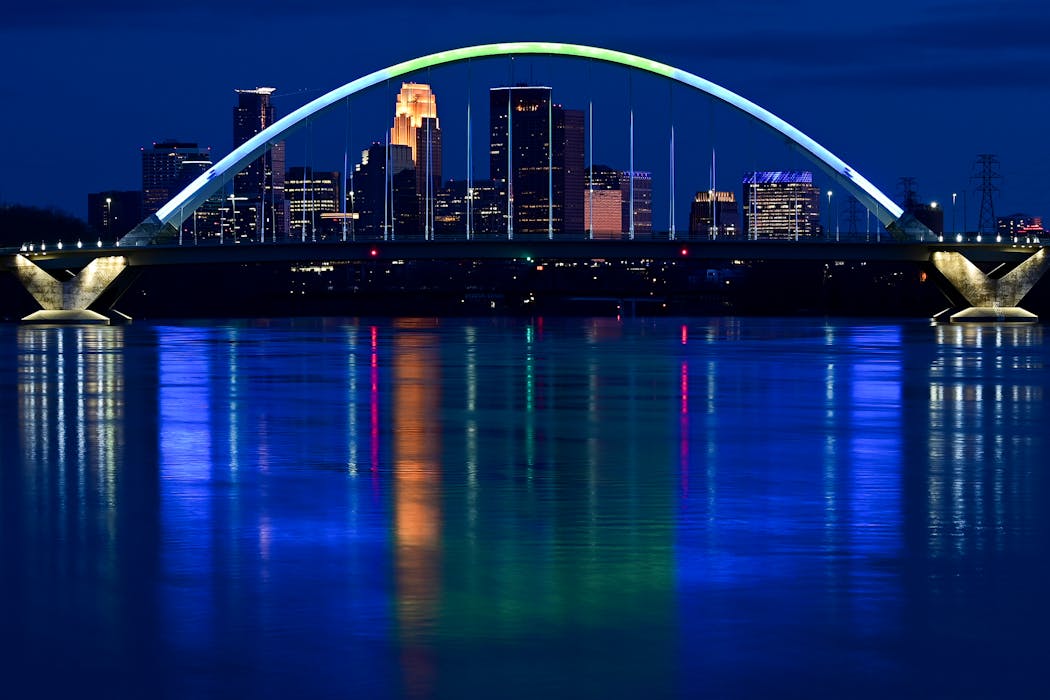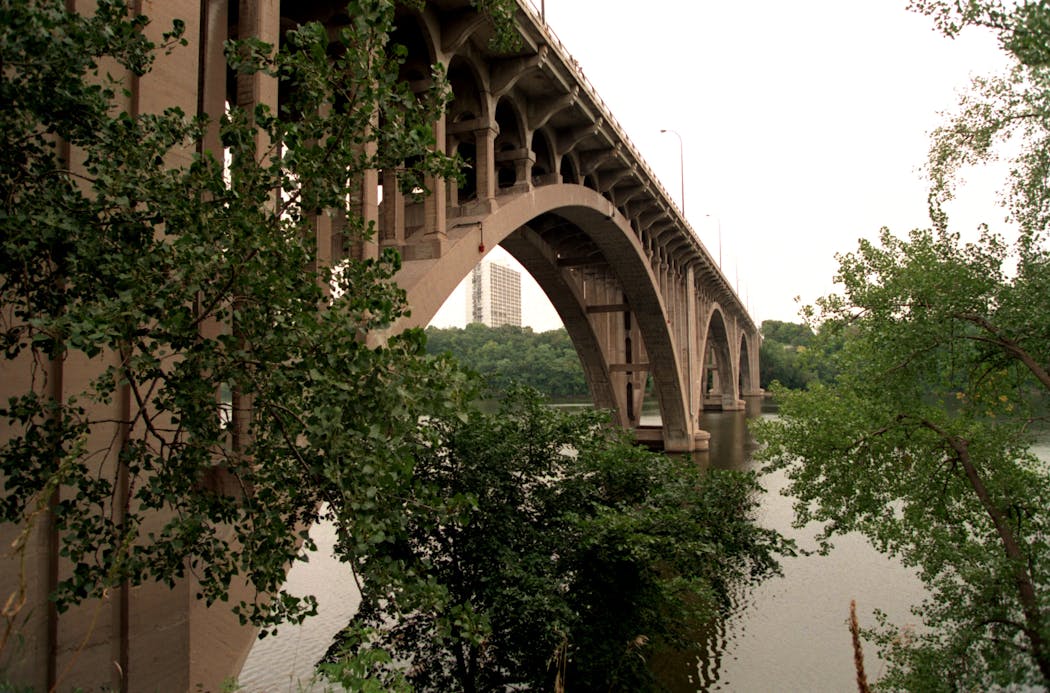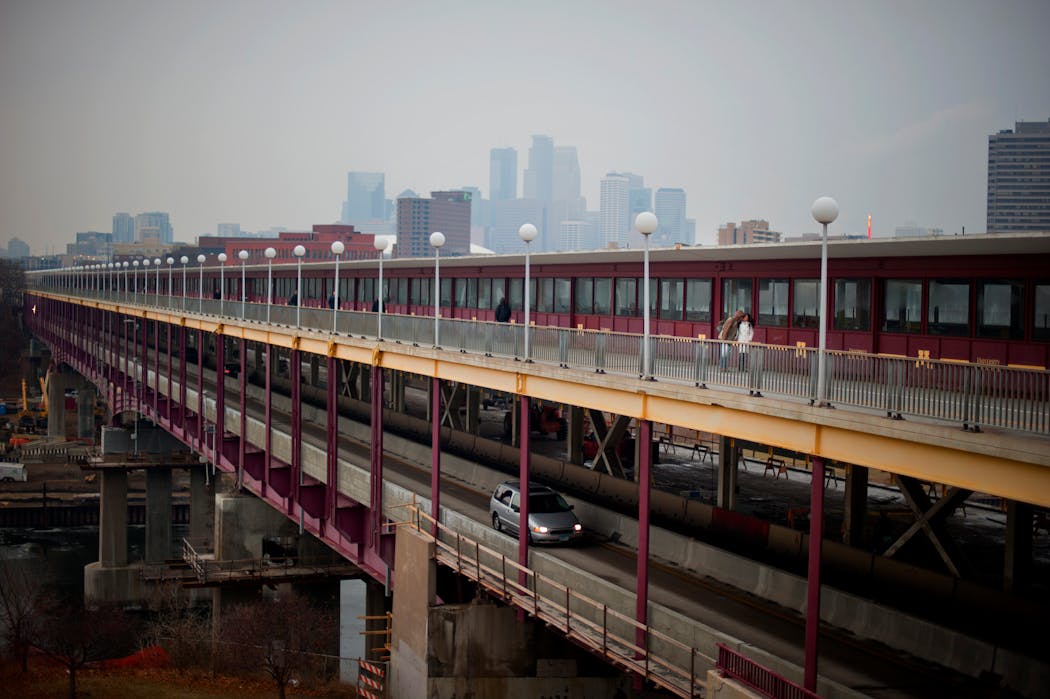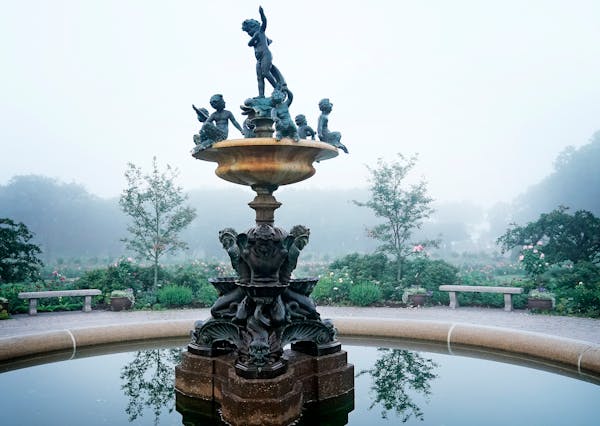More than a city of Lakes, Minneapolis is a city of bridges.
We have so many that we have spares, like the Third Avenue and 10th Avenue bridges, both crossing the Mississippi River just blocks from Hennepin Avenue and I-35W bridges.
In Minneapolis and St. Paul, there are railroad bridges, bridges you forget about until you see some monumental structure leaping across the great river. There are famous tiny bridges (like the one in Loring Park that appeared in the Mary Tyler Moore Show credits) and tidy urban bridges that span the Midtown Greenway or Minnehaha Creek.
What we don't have are fantastically awesome bridges, like New York's Brooklyn Bridge, or clever ones that split in the middle on Michigan Avenue, like in Chicago. Still, ours are impressive in their own way. Each has its own story and its own attributes. Take a stroll across these bridges this summer and see if you agree.
Best in show
Hennepin Avenue Bridge (1,037 ft.)
This suspension is simply the most attractive bridge in the city, if you measure by grandeur and classical styling. A drive across at twilight, with the lights blazing and the Grain Belt sign catching the sunset, is one of those iconic (meaning cliched but still marvelous) Minneapolis views.
The bridge we know and love now is the fourth to ford the river at this spot. The first, constructed in 1855, is thought to be the first permanent bridge over the Mississippi —- no small honor, considering the length of the river. It was replaced in 1876 and again in 1891. The third bridge lasted almost a century, and the impressive and self-confident structure we know now was finished in 1990.
If you take it to Nicollet Island, you can walk across part of one of the city's great bygone structures, the Merriam Street Bridge. It's a remnant of the Broadway Avenue Bridge, which was removed and replaced in 1987, a hundred years after its construction. A single span from that bridge was saved and installed between the island and the St. Anthony Main area. Its fanciful ironwork reminds you how they spent lavishly on public works in the city's early years.
Best for pedestrians
Stone Arch Bridge (2,100 ft.)
In 1881, railroad magnate James J. Hill decreed that a bridge should span the Mississippi and connect to a new train depot in downtown Minneapolis. Twenty-two months later, it was done: a sinuous line of solid stone snaking from the east to the west.
Of all the many bridges that cross the river, only this one is made entirely of stone. The original plans had it crossing above St. Anthony Falls, but engineers warned that the construction might make the falls collapse. The final location required a curved design, partly due to problems around land ownership. The drama and poetry of that curve has made the bridge a lasting beauty.
The trains stopped using the bridge in 1978. Sixteen years later, it was rechristened as a pedestrian walkway. Other bridges downtown may have excellent views of the city, but none has more history or Minnesota bona fides: That's good, solid St. Cloud granite.
Best new span
Lowry Avenue Bridge (889 ft.)
This modern bridge is more beautiful than it has to be. The arches are so brilliantly illuminated that they appear to be made entirely of light. Of the city's stylish bridges, it looks the most like a piece of abstract sculpture.
The original 1905 truss bridge was rebuilt in 1958. In 2008, it was closed and demolished a year later. The version we have now was open for business in 2012.
Best view from
Ford Parkway (1,524 ft.)
OK, so the Ford Parkway Bridge isn't the official name. It's really the more romantic-sounding Intercity Bridge, although Highland Bridge is how the city of St. Paul brands it now. It was built to take workers to the Ford plant on the St. Paul side of the Mississippi. Minneapolis and St. Paul split the cost, which the papers of the day did not disclose.
It took two years to build, and officially opened July 4, 1927. Its grace and monumentality are not apparent when you're driving or walking on the bridge. There are no pillars or statues where it connects to the shore. But the view of the river from the bridge — and the view of the bridge from the river — is exceptional.
Most idiosyncratic
Wabasha Street Bridge (2,462 ft.)
Think of it as the Wabashas. Instead of one broad structure to contain cars traveling in both directions, this structure consists of two bridges. It's also, as bridge nerds will tell you, a "segmental" bridge, meaning it's made up of small parts joined together, instead of long pieces. (That should come in handy at trivia night.)
There's been a bridge on this spot, connecting downtown St. Paul to the other bank of the Miss, since 1859. This version opened in 1998, and was officially renamed the Wabasha Street Freedom Bridge in 2002, honoring the anniversary of 9/11. It is doubtful whether anyone calls it that now.
It's notable for its very early 21st-century decorations, which look like overscaled toothpick dispensers designed by Frank Lloyd Wright. Staircases on either side connect to Raspberry Island, where you can stroll down to see the river flow past. It also might be the only bridge in the Twin Cities that has bathroom access in the middle, if you're suddenly in need. (We'd say it's the only one, but you never know how some people define access.)
Best intention
Washington Avenue Bridge (1,130 ft.)
When you cross the bridge that connects the East and West Banks of the University of Minnesota campus, don't focus on what's there. It's a fairly dull, utilitarian corridor, even now that it's pained in Gopher colors of maroon and gold. Think instead about the original plan for the crossing. An early proposal envisioned a structure modeled after the Ponte Vecchio in Florence, complete with shops and cafes.
It would have been a place to linger, with a marvelous view of the eternally churning waters below. We could build something like that today, if there were the will and the money. But we tend to take bridges to get from one side to the other. It would be marvelous to have a bridge that's a destination of its own.

Helen Simonson is in Jane Austen mode with 'The Hazelbourne Ladies Motorcycle and Flying Club'
AI use by businesses is small but growing rapidly, led by IT sector and firms in Colorado and DC

